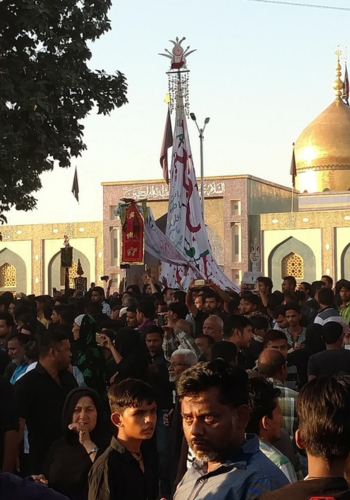Key Rituals

What are the key rituals observed during Muharram
During Muharram, particularly on the days leading up to and including Ashura, various key rituals are observed by Muslims, especially within Shia communities. These rituals serve to commemorate the martyrdom of Imam Hussain and his companions at the Battle of Karbala. Here are the primary rituals associated with this sacred month:
1. Mourning Rituals and Processions
Mourning is a central aspect of Muharram observances. Participants often dress in black and engage in
processions that symbolize grief for the sacrifices made during Karbala. These processions, known
as dasta or mawkib, are particularly prominent on Ashura. Mourners recite elegies and engage in selfflagellation, striking their chests to express solidarity with Imam Hussain’s suffering.
2. Fasting
Fasting on the 9th (Tasu’a) and 10th (Ashura) days of Muharram is a significant practice for many
Muslims. This act of fasting serves as a form of reflection and mourning, allowing individuals to connect
spiritually with the sacrifices made by Imam Hussain.
3. Recitation of Ziyarat Ashura
Reciting Ziyarat Ashura is a common practice during this month, allowing individuals to remember the
sacrifices made during Karbala. This prayer is often recited in congregations and serves to strengthen
spiritual connections among participants.
4. Charitable Acts
Engaging in charitable acts during Muharram emphasizes compassion and generosity. Many individuals
choose to donate food or money to those in need as a way to honor Imam Hussain’s legacy of
selflessness and sacrifice.
5. Sham-e Ghariban
Observed on the evening of Ashura, this poignant ritual involves lighting candles and mourning for the
orphaned children left behind after the tragedy at Karbala. It symbolizes solidarity and remembrance for
those who suffered during this time.
6. Nakhl Gardani
This ritual involves carrying a symbolic structure resembling Imam Hussain’s coffin, known as Nakhl.
Participants carry this decorated structure in solemn processions, accompanied by rhythmic chants that
reflect on the significance of the martyrdom.
7. Majalis (Gatherings)
Special gatherings called majalis take place throughout Muharram, where stories of Karbala are narrated
alongside recitations of elegies and dirges. These gatherings aim to evoke sympathy and emotional
connection among attendees, fostering a communal atmosphere of remembrance.
8. Tashtgozari
In some regions, mourners carry washtubs into mosques as a symbolic reminder of the blockade faced
by Imam Hussain at the Euphrates River during his final days. This ritual highlights both physical
deprivation and spiritual endurance against oppression.
These rituals not only commemorate historical events but also serve to strengthen community bonds
and foster a deeper understanding of faith among participants during this solemn month.
